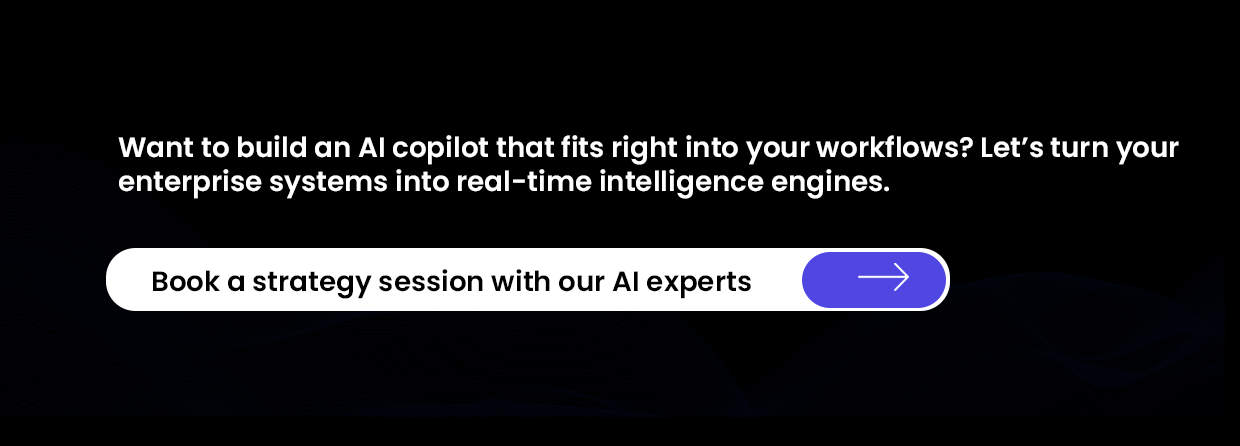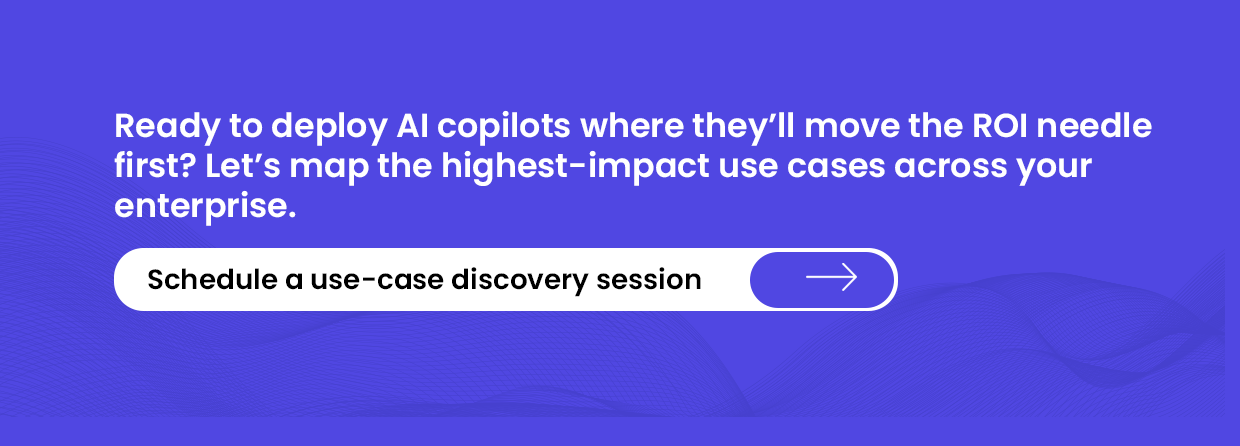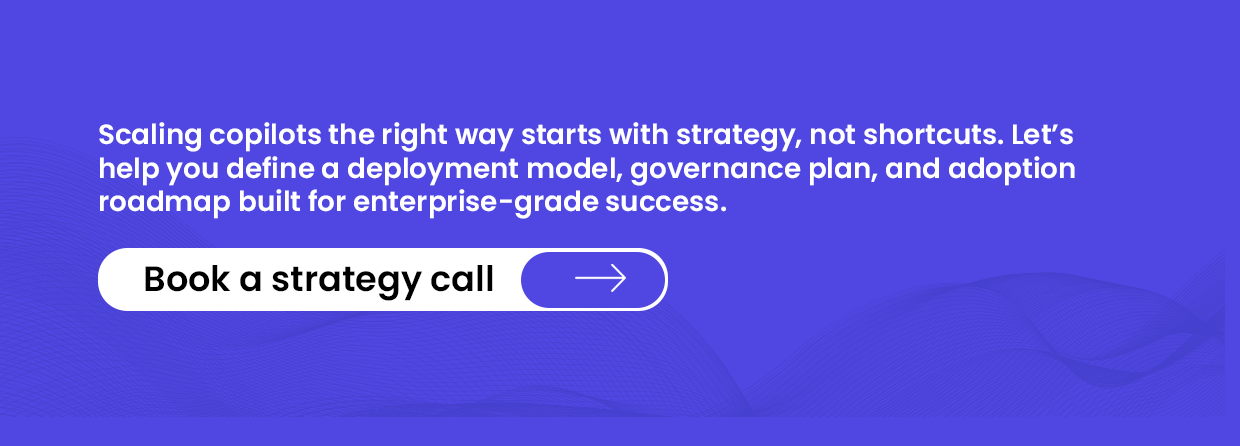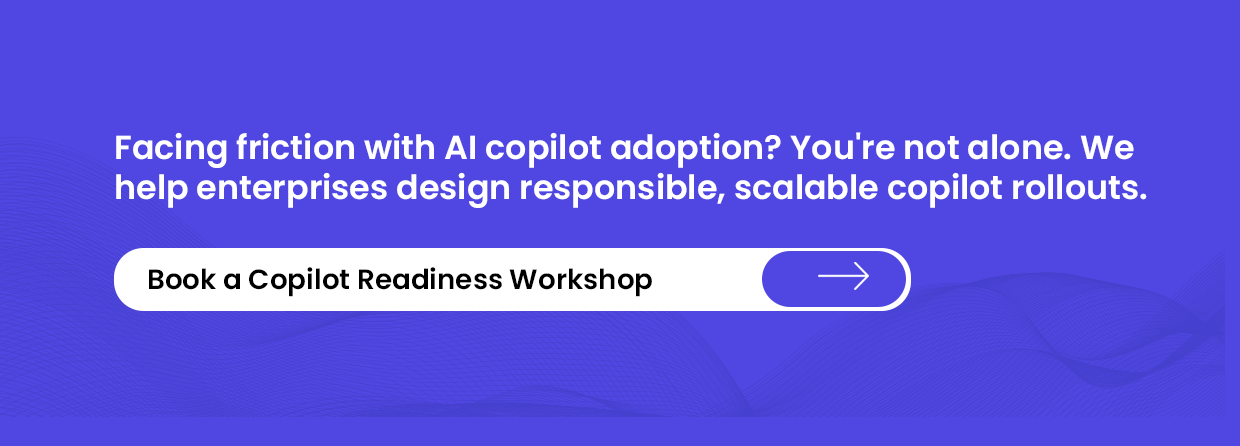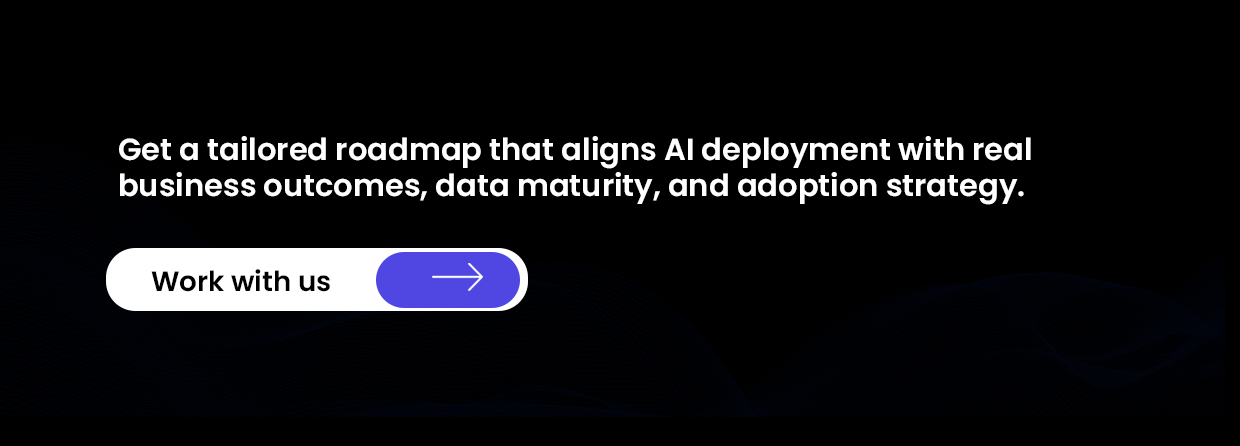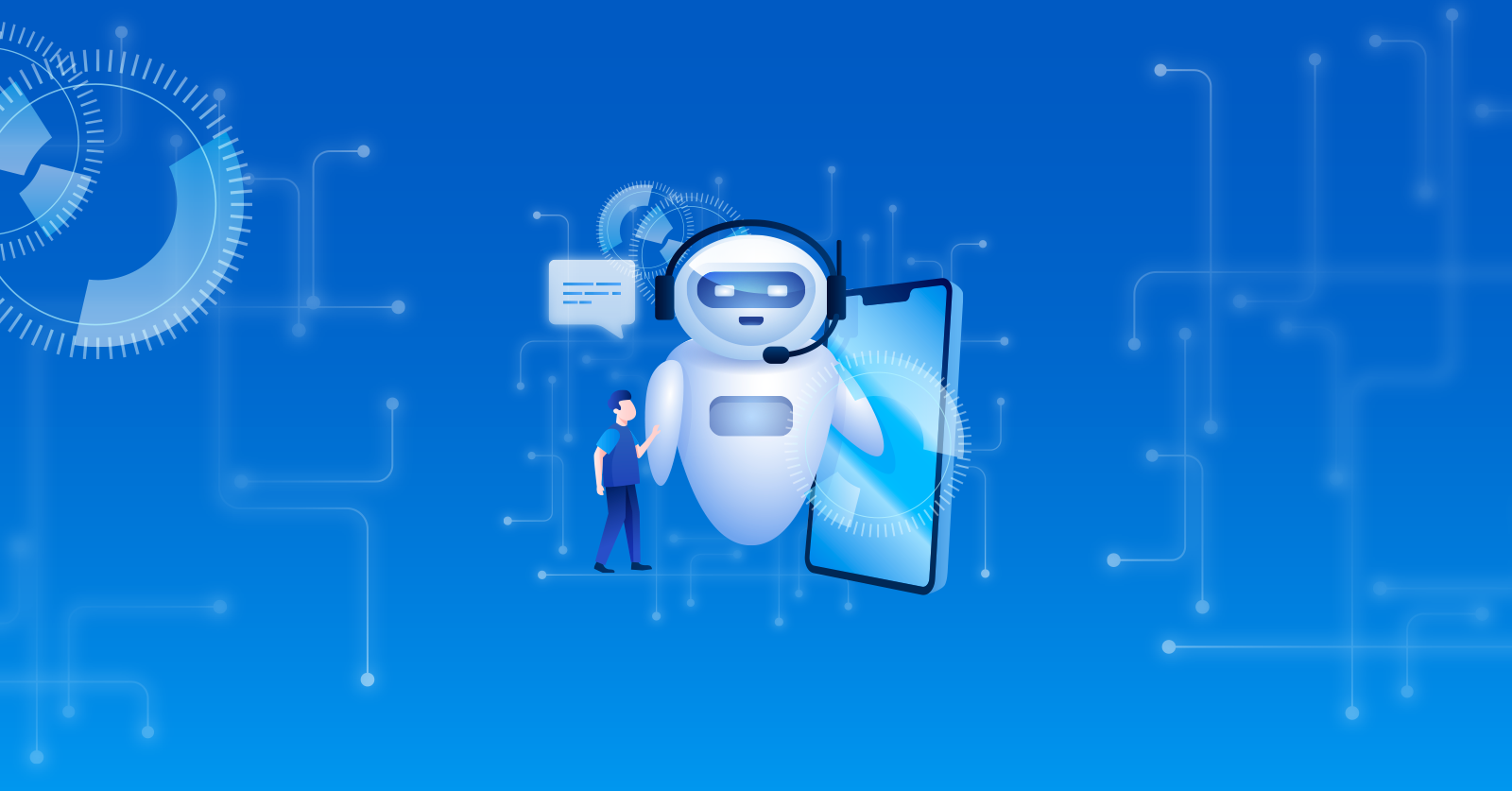
As global markets grow increasingly complex and operational agility becomes a defining factor of competitiveness, enterprises are under sustained pressure to do more with less – less time, fewer resources, and tighter margins. In this environment, Artificial Intelligence is no longer seen as an experimental edge but a core driver of transformation. One of its most practical and enterprise-ready applications today is the AI Copilot.
Unlike traditional automation tools, AI copilots are intelligent, context-aware systems designed to work alongside humans in real time. They support knowledge workers, decision-makers, and cross-functional teams by streamlining tasks, surfacing insights, reducing cognitive load, and accelerating execution across a range of business processes. These systems go beyond static rule-based workflows—they adapt, learn, and engage dynamically with enterprise data, tools, and objectives.
For CFOs, that means faster budget modeling and risk analysis. For HR leaders, intelligent assistants can support faster talent matching and employee lifecycle management. For product and marketing teams, copilots turn scattered data into strategic, real-time insights. At the board level, they enable forward-looking scenario planning powered by real-time market signals and historical performance trends.
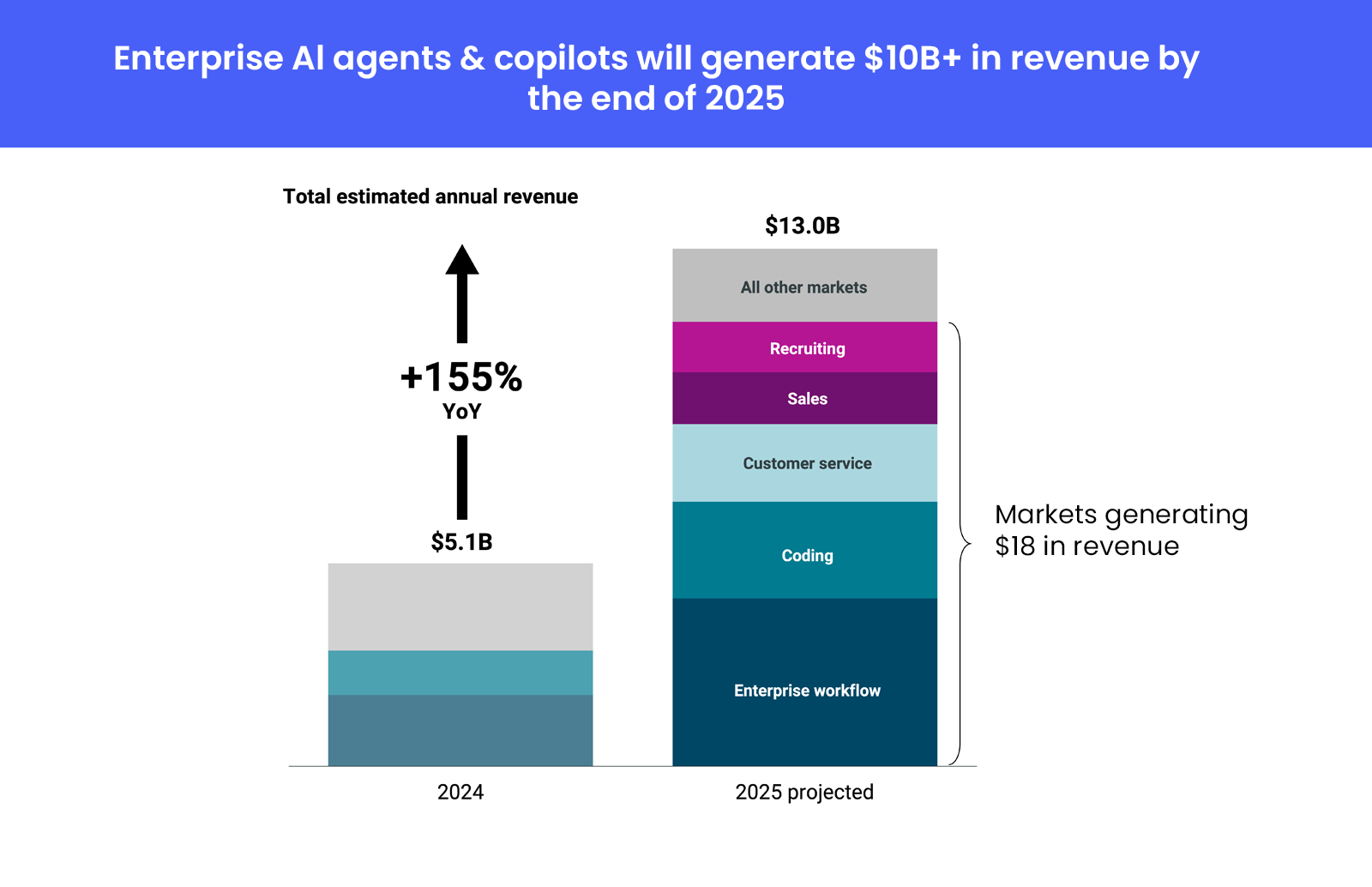
What sets this shift apart is that copilots are not standalone applications—they’re embedded across ecosystems like Microsoft 365, Salesforce, SAP, and internal platforms, making them immediately impactful without demanding total system overhauls. From predictive forecasting and contextual summarization to guided decision support and process automation, their utility spans the enterprise.
In this article, we explore how AI copilots are shaping enterprise operations today, which functions benefit most, what deployment models are being adopted, and what strategic outcomes businesses can expect. As adoption accelerates, understanding the role of AI copilots is not just useful—it’s imperative for future-ready leadership.
What are AI Copilots and How are they Different from Traditional AI Tools?
AI copilots are intelligent digital assistants that operate in real time within enterprise workflows—guiding users, interpreting context, and automating decision-support processes. Unlike legacy AI tools that were often task-specific, rigid, or siloed, copilots function as multi-modal, cross-functional intelligence layers that enhance how teams work with data, documents, tools, and systems.
At their core, AI copilots combine natural language understanding, generative AI models, enterprise data integration, and user intent recognition to perform tasks that previously required manual effort or domain-specific tools. They are embedded into platforms employees already use—CRMs, ERPs, productivity suites, analytics dashboards—providing immediate contextual recommendations, generating content, answering queries, summarizing information, or even executing transactions.
Here’s how they differ from traditional AI or automation tools:
- Traditional AI models are often rule-based or narrow in scope (e.g., a document classification tool or a fraud detection engine). They are trained to perform single, static tasks with predefined inputs.
- AI copilots, on the other hand, are conversational, interactive, and dynamic. They can interpret ambiguous input, adapt to context, and perform multiple actions across systems—without needing custom scripting or UI changes.
For example, while a legacy chatbot might only answer FAQs, an AI copilot in customer support can summarize a full case file, draft a personalized email response, flag policy gaps, and recommend resolution actions—all in one interface.
Another key differentiator is data interoperability. Traditional AI systems often required custom integrations with limited datasets. Copilots today can be fine-tuned to ingest structured and unstructured data across departments—sales, finance, legal, HR—enabling a unified intelligence layer that reflects the full operational picture.
In short, AI copilots are not just tools—they are enterprise augmentation frameworks that help organizations transition from process automation to decision acceleration. Their flexibility, speed of deployment, and relevance to business-critical systems make them a defining feature of modern enterprise infrastructure.
Enterprise Functions Where AI Copilots Are Delivering Maximum ROI
As enterprises shift from exploring AI in isolated use cases to integrating it across operational layers, AI copilots have emerged as clear value multipliers—particularly in functions that involve high-volume information processing, decision-making complexity, or fragmented workflows. These copilots aren’t just saving time; they’re enabling new ways of working across key business units.
1. Finance and Strategic Planning
In finance departments, AI copilots are streamlining processes like financial modeling, forecasting, and variance analysis. Rather than manually navigating spreadsheets, CFOs and financial analysts can prompt copilots to compare actuals against projections, flag anomalies, and generate board-ready summaries in minutes. These copilots also integrate with ERP systems to surface cost trends, margin risks, and revenue opportunities in real time.
2. Customer Support and CX Operations
AI copilots in customer service environments enhance agent productivity by auto-summarizing past interactions, suggesting personalized responses, and triggering backend workflows like refunds, cancellations, or escalations. They reduce average handling time, improve first-contact resolution rates, and ensure brand consistency—without retraining agents or rewriting legacy scripts.
3. Sales and Revenue Operations
Within CRMs, copilots can prioritize leads based on buying signals, draft outreach emails tailored to account history, and recommend upsell strategies. Sales managers can ask copilots to summarize pipeline health, predict quota attainment, or identify territories needing intervention—accelerating decision cycles without waiting for static reports.
4. Legal and Compliance
For legal teams, copilots can assist in reviewing contracts, flagging non-standard clauses, or drafting compliant language based on jurisdiction. In regulated industries, these copilots can also monitor real-time updates to compliance frameworks and alert relevant teams before issues become liabilities.
5. Human Resources
AI copilots embedded in HR platforms can auto-screen CVs, recommend candidates based on historical performance data, or draft job descriptions aligned with market trends. Post-hiring, they can assist in onboarding workflows, compliance training reminders, and sentiment analysis on employee feedback—making HR operations more data-informed and efficient.
6. IT and Internal Support
Within ITSM platforms, copilots help teams diagnose issues faster by analyzing historical incident logs, user behavior, and system alerts. Employees can use natural language queries to troubleshoot common issues—like access requests or app malfunctions—reducing ticket volumes and resolution time.
In each of these functions, copilots aren’t replacing staff—they’re amplifying what enterprise teams can do with the same headcount and infrastructure. They’re also creating a new standard for what operational excellence looks like: faster, more adaptive, and insight-led.
From Process Efficiency to Decision Intelligence: What’s Driving the Copilot Shift
Over the past decade, enterprises have invested extensively in automation—optimizing workflows, digitizing legacy systems, and deploying RPA tools to handle repeatable tasks. While these investments yielded significant efficiency gains, they have largely plateaued. The next leap forward isn’t just about doing things faster—it’s about doing the right things, informed by real-time data, predictive models, and contextual reasoning. This is where AI copilots step in.
Unlike traditional automation—which excels at rules-based execution—copilots are built for judgment-intensive environments. They synthesize signals across disconnected systems, respond to ambiguous queries, and support dynamic decision-making. In other words, they don’t just move information—they help interpret it.
This evolution is being accelerated by four converging enterprise priorities:
- Data overload: Teams are generating and receiving more data than they can feasibly analyze. Copilots help make that data actionable.
- Talent constraints: With leaner teams and increasing demands, copilots fill capability gaps without requiring full-time hires.
- Speed-to-decision: Market dynamics shift too fast for quarterly reports to guide action. Copilots reduce latency between insight and execution.
- User empowerment: Non-technical staff can now query data, draft outputs, or generate reports without relying on IT or analytics teams.
By supporting real-time decision intelligence across the enterprise, AI copilots are redefining what digital transformation means. They don’t just automate the how—they elevate the why behind business decisions.
How Enterprises Are Deploying and Governing AI Copilots
Deploying AI copilots at scale is not merely a technical upgrade—it’s a strategic transformation. Enterprises must manage data access, model alignment, employee workflows, and compliance frameworks in tandem. The approach requires balance: delivering value quickly while ensuring long-term trust, security, and control.
1. Deployment Models Vary by Use Case
Enterprises typically follow one of three deployment paths based on maturity, risk tolerance, and intended function:
- Off-the-shelf copilots integrated within platforms like Microsoft 365, Salesforce, or Notion, used for document generation, summarization, or task management. These are low-friction and fast to adopt.
- Custom copilots built on enterprise LLMs (like Azure OpenAI, Claude, or open-source models), trained on proprietary data and workflows. These offer greater control and alignment to business context.
- Hybrid models that use API-based copilots alongside human-in-the-loop systems for functions like legal review, finance approvals, or compliance checks.
The chosen model often evolves, starting with low-risk departments like marketing or operations before expanding to core functions.
2. Governance Is a Foundational Requirement
With copilots accessing sensitive documents, customer data, and internal systems, enterprises are placing heavy emphasis on AI governance. This includes:
- Access control and role-based data permissions
- Prompt security and guardrails to prevent misuse or unintended generation
- Audit trails to ensure transparency around how copilots are used
- Model testing and validation to mitigate bias or incorrect outputs
Some enterprises also set up AI Centers of Excellence (CoEs) to define best practices, evaluate vendors, and coordinate cross-functional adoption.
3. Change Management Is Non-Negotiable
Despite the sophistication of copilots, successful adoption depends on workforce engagement. Employees must be trained not only to use these systems but to understand their role—as assistants, not authorities. Enterprises leading in this space embed copilots into existing systems and workflows, rather than asking teams to learn new tools from scratch.
4. Monitoring ROI, Not Just Usage
True enterprise value doesn’t come from usage stats alone. Leading firms evaluate copilots based on productivity gains, decision-making speed, cost avoidance, and even employee satisfaction. Custom dashboards are often built to measure and refine these metrics in real time.
AI copilots, when deployed strategically and governed rigorously, become more than digital assistants—they evolve into decision enablers across the organization. But without clear oversight and adoption alignment, they risk becoming underutilized tech investments.
Cost of Building and Integrating an AI Copilot in the Enterprise — and What ROI Looks Like
Building and integrating an AI copilot into the enterprise environment is a multifaceted investment. It’s not limited to model development or licensing—it spans data integration, security compliance, change management, and long-term scaling. That said, when implemented with a clear strategic objective, copilots often deliver accelerated ROI compared to traditional automation projects.
Cost Breakdown (Indicative Ranges):
- Off-the-shelf integration:
For enterprises adopting copilots embedded in tools like Microsoft 365 Copilot, GitHub Copilot, or Salesforce Einstein GPT, costs primarily depend on licensing. Pricing typically ranges from $30 to $100/user/month, depending on usage tiers and volume.
- Custom AI Copilot Development:
Enterprises building copilots tailored to their business logic, systems, and data models can expect initial costs between $150,000 and $500,000, depending on:
- Complexity of use cases
- Model type (fine-tuned proprietary LLMs vs. foundation models via API)
- Depth of integration with internal systems (ERP, CRM, BI platforms)
- Security, compliance, and audit layers
- Deployment scale (pilot vs. full org rollout)
- Ongoing Maintenance & Optimization:
Budgeting 15–25% of initial development cost annually is common for fine-tuning models, monitoring usage, expanding use cases, and ensuring continued alignment with compliance standards.
Measuring ROI: Where Enterprises Are Seeing Returns
While costs can be significant, so are the returns. Most enterprises begin to see tangible ROI within 6–12 months, especially when copilots are deployed in high-leverage areas.
- Productivity Gains:
Enterprises report 20–40% time savings in areas like reporting, document creation, analysis, and support resolution. That translates into more strategic work per FTE, faster project delivery, and reduced overtime costs.
- Decision Acceleration:
Copilots reduce decision latency by bringing contextually relevant insights directly into the workflow. Leaders act faster—and with better data—which reduces missed opportunities or reactive firefighting.
- Operational Cost Reduction:
In customer support, IT helpdesks, and contract management, copilots reduce workload per agent or analyst, allowing teams to scale without adding headcount.
- Employee Enablement:
Teams with access to copilots report higher engagement and reduced cognitive fatigue. Especially in knowledge-heavy roles, this leads to stronger retention and better outputs.
- Strategic Differentiation:
Perhaps the most overlooked ROI is competitive positioning. Enterprises that integrate copilots early often improve service velocity, accuracy, and innovation—giving them a clear edge in saturated or efficiency-driven markets.
In summary, while the upfront costs of building or integrating an AI copilot may appear steep, the compound returns across productivity, agility, and workforce enablement make it a strategically sound investment. When paired with strong governance and intentional rollout, copilots don’t just pay off—they multiply value across departments.
How to Integrate an AI Copilot into Your Enterprise Ecosystem
Integrating an AI copilot into an enterprise is not a plug-and-play exercise. It involves strategic alignment, secure infrastructure planning, cross-functional collaboration, and iterative refinement. Whether the goal is to deploy a ready-made copilot (e.g., Microsoft 365 Copilot) or build a bespoke one tailored to your organization’s needs, the integration journey typically unfolds across several defined stages:
1. Define Use Cases with High Business Impact
Begin by identifying where a copilot can create immediate and measurable value. These are typically functions with repetitive manual tasks, time-sensitive decisions, or fragmented data—such as sales reporting, policy drafting, financial forecasting, or employee onboarding. Ensure use cases are not only technically feasible but also operationally relevant.
2. Choose the Right Architecture Model
There are two primary paths:
- Pre-built Copilots: Integrated via APIs or enterprise apps (e.g., Salesforce Einstein GPT, Microsoft Copilot). These offer rapid deployment but limited customization.
- Custom Copilots: Built using APIs from foundation models (like OpenAI, Anthropic, or Cohere), fine-tuned on enterprise data, and hosted within your environment. These require more investment but offer tighter control and scalability.
3. Enable Secure Access to Enterprise Data
Copilots require access to structured and unstructured data—emails, documents, CRM records, ERP logs, etc. Set up secure, role-based pipelines that feed relevant data into the copilot without compromising PII, IP, or regulatory standards. Data preprocessing, redaction, and tagging often form part of this step.
4. Integrate Within Existing Tools and Workflows
Copilots are most effective when embedded into systems employees already use. That includes productivity tools (e.g., Outlook, Slack, Google Workspace), business platforms (Salesforce, SAP), and internal dashboards. Use APIs, browser extensions, or native integrations to bring the copilot experience to the point of work.
5. Establish Governance and Guardrails
Define policies for prompt monitoring, user authentication, data logging, and model explainability. Deploy access controls based on department, role, and geography. Establish an AI governance committee to oversee usage, compliance, and continuous optimization.
6. Pilot and Iterate
Before a full-scale rollout, launch a limited pilot in a single team or business unit. Monitor for response quality, user trust, hallucination risks, and time savings. Collect qualitative and quantitative feedback to improve prompt engineering, user flows, and output accuracy.
7. Scale and Optimize Over Time
Once initial validation is complete, expand usage across functions while tracking key metrics: adoption, task completion rates, time saved, and decision accuracy. Use fine-tuning, reinforcement learning from human feedback (RLHF), and continuous retraining to align the copilot more deeply with enterprise-specific language and workflows.
Successful copilot integration is not just about technical implementation—it’s about user adoption, trust, and business alignment. Enterprises that treat it as a long-term capability, rather than a single project, are the ones who unlock its full potential.
Navigating the Challenges of Copilot Adoption in the Enterprise
While the strategic benefits of AI copilots are compelling, enterprises must also be prepared to navigate the real-world complexities that come with deploying them at scale. From technical readiness to cultural adoption, the challenges are not trivial—but with foresight and structure, they are manageable.
1. Data Readiness and Integration Complexity
Most copilots require access to varied and distributed enterprise data—across documents, emails, CRMs, ERPs, and knowledge bases. The challenge lies not just in access, but in ensuring data is accurate, up-to-date, and structured enough for meaningful responses. In many cases, this calls for significant investment in data normalization, tagging, and pipeline optimization before a copilot can generate reliable outputs.
2. Hallucinations and Output Trustworthiness
Even the most advanced LLMs occasionally produce plausible-sounding but incorrect information—known as hallucinations. In high-stakes enterprise contexts like finance, legal, or compliance, this can be costly. Enterprises must put mechanisms in place to trace responses to original data sources, apply confidence scoring, and involve human validation where necessary.
3. Regulatory and Privacy Considerations
AI copilots often handle sensitive data subject to strict compliance regulations (e.g., GDPR, HIPAA, FINRA). Ensuring adherence means not only managing data storage and processing geography but also putting in place audit trails, consent mechanisms, and ethical guardrails for output generation. Choosing between cloud-based vs. on-premises deployment becomes a strategic decision here.
4. Workforce Skepticism and Resistance
Employees may be hesitant to trust or adopt copilots, especially if they perceive the technology as replacing their role or adding another tool to an already crowded stack. Addressing this requires clear communication from leadership, proper onboarding, and framing the copilot as a partner in productivity—not a substitute for expertise.
5. Model Governance and Version Control
As enterprises deploy and fine-tune their own models, managing different versions across environments becomes critical. You need visibility into which copilot version is being used by which team, what training data it was exposed to, and how its performance has evolved over time. This ensures accountability and reliability in decision workflows.
6. Long-Term Scalability and Vendor Lock-In
Early pilots may succeed, but scaling requires infrastructure that can support thousands of users, multi-language support, and region-specific compliance. Enterprises must also be cautious about vendor dependencies—especially when using proprietary models—so that they maintain strategic flexibility in the long run.
Navigating these challenges is not a deterrent—it’s a roadmap. Enterprises that approach AI copilots with a clear strategy, robust governance, and cross-functional alignment will be best positioned to lead, not lag, in the next phase of AI-driven enterprise transformation.
Strategic Recommendations for Enterprise Leaders Considering AI Copilots
As AI copilots shift from emerging innovation to enterprise staple, leadership teams are being called to make decisions that will shape not just productivity gains, but future organizational resilience. This isn’t simply a technology initiative—it’s a strategic capability that touches data governance, employee enablement, and competitive agility.
To approach copilots wisely, enterprise leaders must begin by anchoring their investment to business outcomes. The most successful deployments start not with the AI itself, but with a well-defined set of problems: Where is the organization losing time? Where are decisions delayed or duplicated? Where does institutional knowledge live in silos? Copilots thrive in environments where inefficiencies are known and measurable.
It’s also essential to treat data infrastructure not as a back-office concern, but as the backbone of the entire initiative. Without clean, structured, and responsibly governed data, copilots will struggle to produce accurate or contextually appropriate responses—eroding user trust before adoption even begins. Data readiness must be prioritized before deployment, not retrofitted after failure.
The role of change management cannot be overstated. Copilot adoption requires a cultural shift, one in which employees view AI not as a threat to expertise but as a force multiplier. Leaders must invest in upskilling, transparency, and usage frameworks that empower teams to engage with the technology safely and confidently.
Finally, long-term strategy requires intentional design. Copilots should not exist as isolated features—they should evolve into a distributed intelligence layer across the enterprise. This means thinking beyond single applications and toward integrated ecosystems, where copilots enhance workflows, inform decision-making, and scale organizational knowledge.
In an era where time-to-decision defines market leadership, AI copilots offer a clear and immediate advantage. But as with all transformative technologies, their success depends on more than access—it depends on how deliberately they are introduced, governed, and scaled.
If your organization is considering AI copilots, the opportunity is not in experimenting with tools. It’s in building capability. The sooner that shift happens, the greater the compounding value over time.
Why Choose CodingWorkX to Build Your AI Copilot
At CodingWorkX, we specialise in building AI copilots that don’t just work—they drive enterprise value from day one. We understand that for large organisations, success isn’t defined by what’s technically possible, but by what’s secure, scalable, and strategically aligned to business goals.
What sets us apart is our ability to bridge technical depth with enterprise context. Whether you’re deploying a lightweight assistant in your productivity suite or building a domain-specific copilot integrated into your internal systems, we bring the architectural discipline, compliance awareness, and product foresight required to make it sustainable.
Our team is fluent in the full spectrum of AI development—from prompt engineering and LLM integration to secure data pipelines, human-in-the-loop workflows, and role-based governance. We don’t take shortcuts, and we don’t offer one-size-fits-all solutions. Instead, we co-create with your teams to build copilots that align with your internal tooling, data security standards, and long-term innovation roadmap.
With CodingWorkX, you’re not just building an AI capability—you’re establishing a foundation for adaptive intelligence across your enterprise. If you’re ready to lead, not follow, we’re ready to partner.

